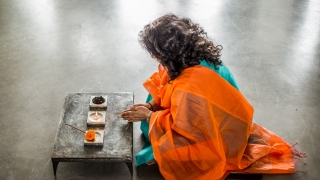
What does it mean to sign up for a yoga training
It means to wake up to ourSelf. It means to stop blaming. It means to take responsibility. It means to recognize, face, accept and transform our weaknesses.

![]() 3 minutes
3 minutes
The wisdom of Ayurveda and Yoga for the Fall season
I think you will agree with me when I say that the changing season can be harsh on us... As the temperature starts to cool down, we tend to experience more dryness, roughness, rigidity...
In Ayurveda this season is characterized by increased Vata dosha: dry, cold, rough, rigid, light, thin qualities.
With the following points, step-by-step, you can make the changing season and the transition smooth:
What is the bottom line? These steps will help your body and mind to adjust and you will feel better.
STAY IN TOUCH
Start your FREE subscription to Indu Arora's newsletter to get more on Yoga and Ayurveda here
Say hello on Instagram
Subscribe to my Youtube Channel.

It means to wake up to ourSelf. It means to stop blaming. It means to take responsibility. It means to recognize, face, accept and transform our weaknesses.

Today, I am looking at the trees outside the window, some that stand bare and some that are still in the process of shedding every single last leaf, to eventually stand bare, dry, and seemingly hopeless, yet tall and ready to spring back in action when it is time.

In vedic texts, the feminine is celebrated in many divine forms and one of them is Durga. "Drug" means a state which is impossible to transcend, accomplish ir win over. Durga as a Goddess is the energy that has accomplished the impossible and the impossibility.Both "Durg" as well as "Durga" resides within each one of us.